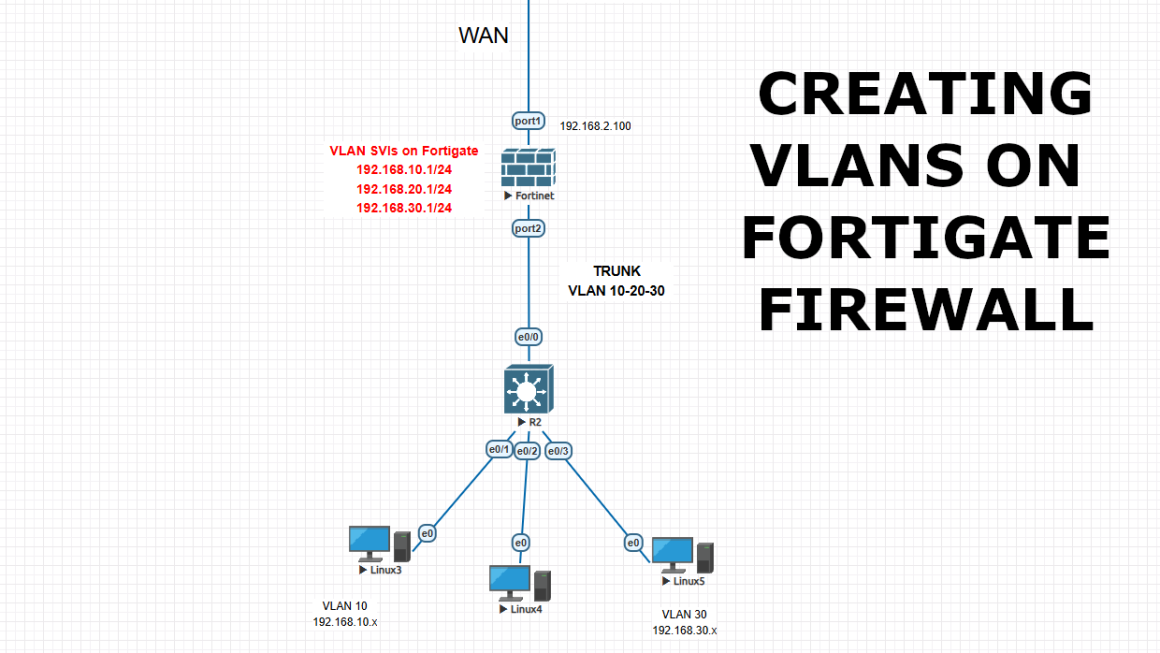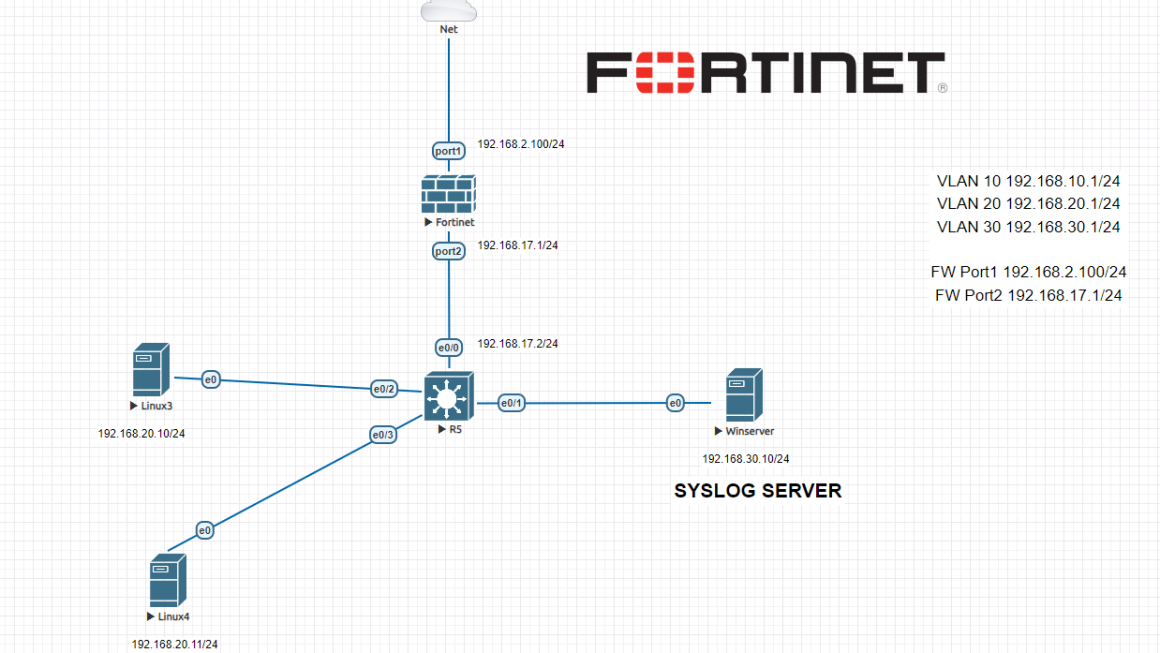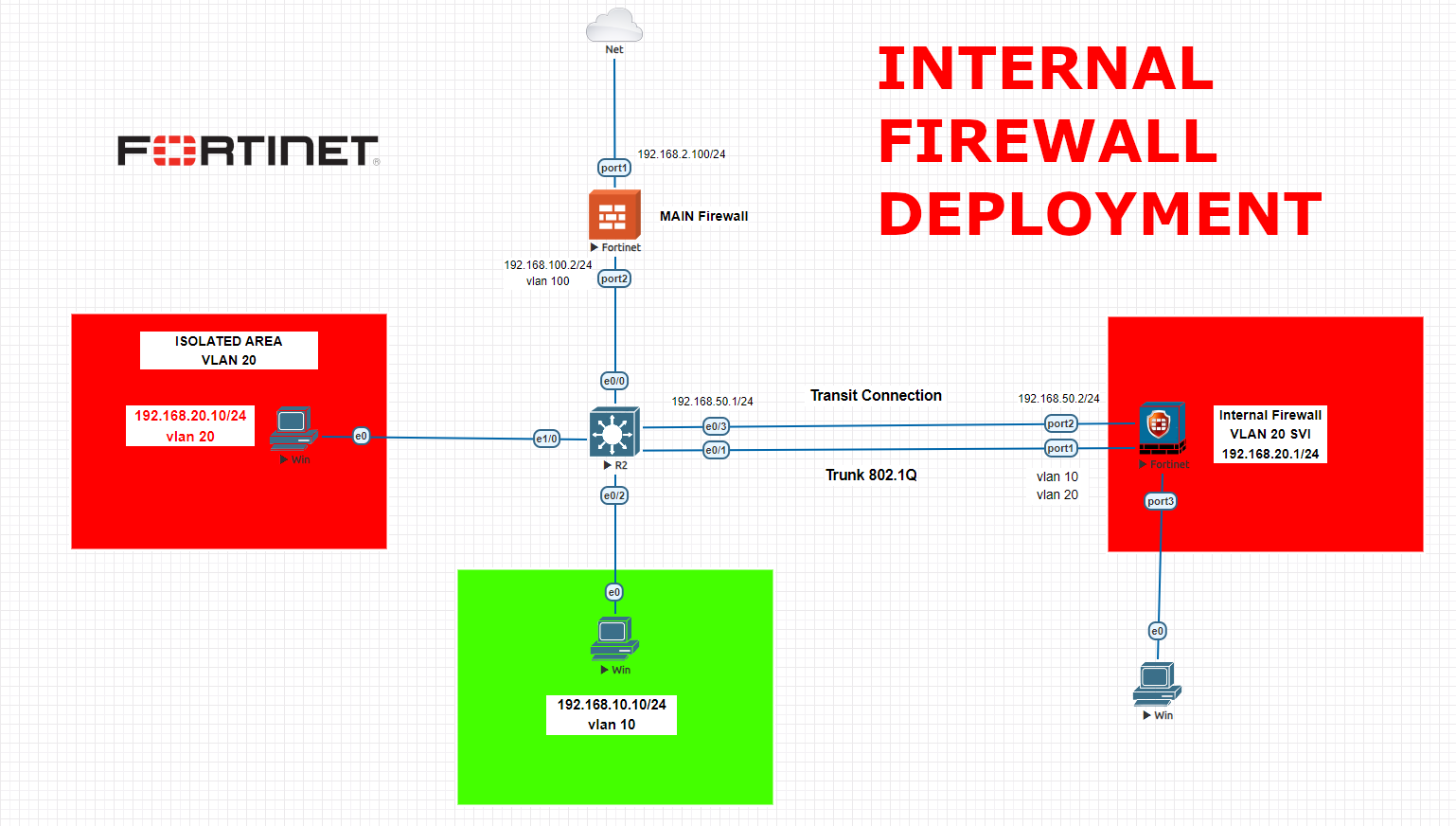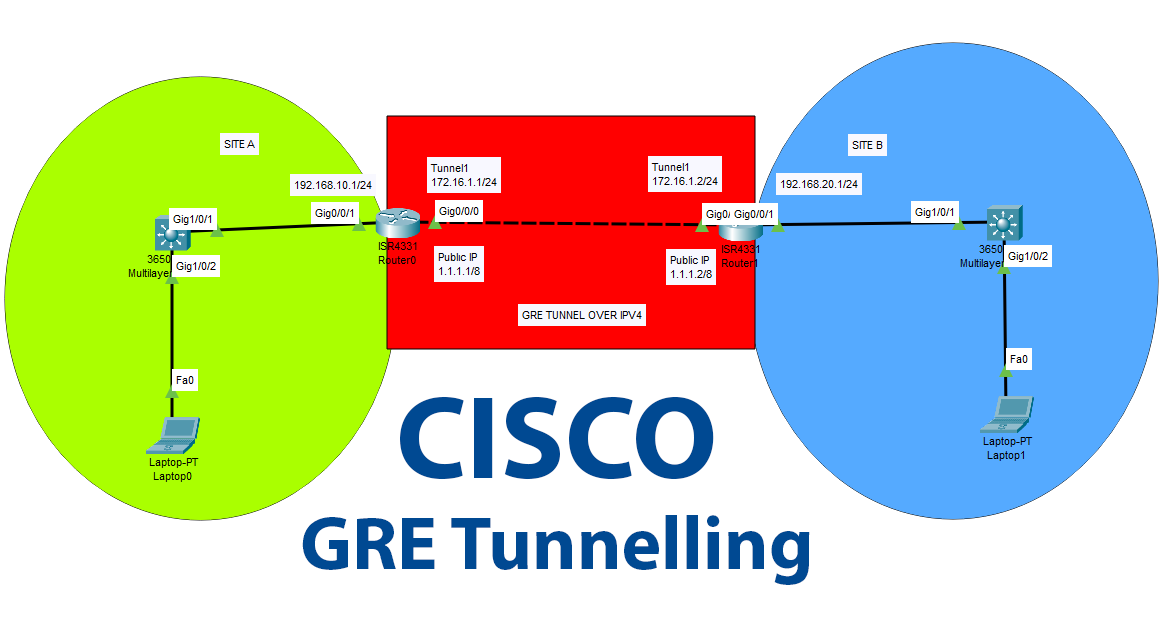Creating VLANs on Fortigate and Cisco Core L3 switch connection
In this lab, I will show you how to create VLANs on Fortigate firewall instead of creating VLANs on Cisco L3 switch. You can also find the Cisco to Fortigate version in my posts. We will create 3 vlans as VLAN 10 – 192.168.10.1/24 , VLAN 20 – 192.168.20.1/24 , VLAN 30 – 192.168.30.1/24 and […]
Syslog Integration With Fortigate Firewall
In this lab, we will configure Windows OS based Kiwi Syslog with Fortigate firewall. There are already some enterprise level solutions from Fortigate but this lab is prepared for those who wants to keep their external syslog server on Windows server. There are several syslog application, in this example we choose Kiwi syslog. Also you […]
[Hacking Series/Lab 5] –How to use CAM table overflow for attack? (MAC flooding)
Disclaimer: These methods and techniques are purely for educational and informational purposes. All attacks were carried out in an offline isolated virtual environment. The use of these techniques in normal life is illegal and the responsibility lies strictly with the reader. DO NOT USE THESE TECHNIQUES IN REAL LIFE ! A CAM table attack, also […]
[Hacking Series/Lab 4] –How to launch MAN IN THE MIDDLE Attack? (ARP poisoning)
Disclaimer: These methods and techniques are purely for educational and informational purposes. All attacks were carried out in an offline isolated virtual environment. The use of these techniques in normal life is illegal and the responsibility lies strictly with the reader. DO NOT USE THESE TECHNIQUES IN REAL LIFE ! ARP poisoning and Man-in-the-Middle (MITM) […]
[Hacking Series/Lab 3] –How to launch CDP (LLDP) Attack to a Cisco switch?
Disclaimer: These methods and techniques are purely for educational and informational purposes. All attacks were carried out in an offline isolated virtual environment. The use of these techniques in normal life is illegal and the responsibility lies strictly with the reader. DO NOT USE THESE TECHNIQUES IN REAL LIFE ! CDP Attack (Cisco Discovery Protocol) […]
[Hacking Series/Lab 2] – SNMP Attack ! This training was created for preventive defensive purposes.
Disclaimer: These methods and techniques are purely for educational and informational purposes. All attacks were carried out in an offline isolated virtual environment. The use of these techniques in normal life is illegal and the responsibility lies strictly with the reader. DO NOT USE THESE TECHNIQUES IN REAL LIFE ! An SNMP (Simple Network Management […]
[Hacking Series/Lab 1] – VLAN Hopping Attack ! This training was created for preventive defensive purposes.
Disclaimer: These methods and techniques are purely for educational and informational purposes. All attacks were carried out in an offline isolated virtual environment. The use of these techniques in normal life is illegal and the responsibility lies strictly with the reader. DO NOT USE THESE TECHNIQUES IN REAL LIFE ! In this training, I will […]
OT/IT Security – Internal Firewall Fortigate Implementation with configurations for your critical networks
An internal firewall, also known as an internal network firewall or a segment firewall, is a security system designed to protect and control traffic between different segments within an organization’s internal network. Unlike a perimeter firewall, which protects the network from external threats, an internal firewall focuses on securing the internal network by regulating the […]
How to create DMZ (Demilitarized Zone) on Fortigate Firewall?
What is DMZ (Demilitarized Zone)? A DMZ (Demilitarized Zone) in computer networking refers to a physical or logical subnetwork that contains and exposes an organization’s external-facing services to an untrusted network, usually the internet. The purpose of a DMZ is to add an additional layer of security to an organization’s local area network (LAN); an […]
GRE Tunnels between multiple sites
A GRE (Generic Routing Encapsulation) tunnel in Cisco is a method of encapsulating and tunneling network traffic over an IP network. It allows the creation of a virtual point-to-point link between two endpoints, typically routers or switches, across an existing network infrastructure. Here’s how it works: GRE tunnels are often used for various purposes, such […]


![[Hacking Series/Lab 5] –How to use CAM table overflow for attack? (MAC flooding)](https://barisyuksel.com.tr/wp-content/uploads/2024/08/macof_general1-966x653.png)
![[Hacking Series/Lab 4] –How to launch MAN IN THE MIDDLE Attack? (ARP poisoning)](https://barisyuksel.com.tr/wp-content/uploads/2024/08/mitm_diagram_topology-1035x653.png)
![[Hacking Series/Lab 3] –How to launch CDP (LLDP) Attack to a Cisco switch?](https://barisyuksel.com.tr/wp-content/uploads/2024/08/cdp_diagram.png)
![[Hacking Series/Lab 2] – SNMP Attack ! This training was created for preventive defensive purposes.](https://barisyuksel.com.tr/wp-content/uploads/2024/07/snmp_attack_diagram1.png)
![[Hacking Series/Lab 1] – VLAN Hopping Attack ! This training was created for preventive defensive purposes.](https://barisyuksel.com.tr/wp-content/uploads/2024/07/vlan-hopping-diagram2.png)


